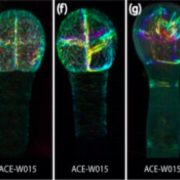
A toolkit for studying cellular reorganization during early Arabidopsis thaliana embryogenesis (Plant J.) ($)
Plant Science Research WeeklyEmbryogenesis is the simple process of plant development, but until recently our knowledge has been limited to how individual cells are specified and organized. Reported markers have been mostly constitutive promoter-driven, a fact that creates background and makes them unsuitable for the study of cellular…
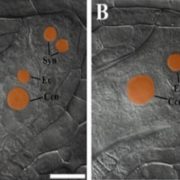
ARF2 – ARF4 and ARF5 are essential for female and male gametophyte development in Arabidopsis (Plant Cell Physiol.)
Plant Science Research WeeklyAuxin is considered a master molecule for plant growth and development; in a whimsical way, IAA (Indole – 3 – Acetic Acid) has been defined as "Induce Almost Anything"! Auxin-mediated gene expression is regulated by Auxin Responsive Factor (ARFs). The model plant Arabidopsis thaliana contains 23…
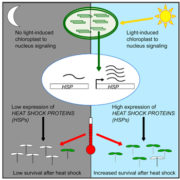
Chloroplast signaling gates thermotolerance in Arabidopsis (Cell Reports)
Plant Science Research WeeklyPlants are able to sense and respond to temperature changes in their environment. However, the mechanism by which high temperature is sensed and then relayed to affect the expression of heat shock transcription factors (HSFs) is unclear. Dickinson et al. demonstrated that Arabidopsis plants show…
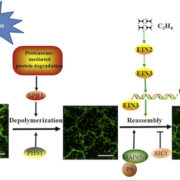
Microtubule reassembly mediated by ethylene in response to salt stress (Plant Physiol.)
Plant Science Research WeeklyIt has been shown previously that cortical microtubule reorganization contributes to adaptation to salt stress; however, the upstream factors that signal this response are not know. Ethylene has been shown to regulate microtubule stability and organization in roots and etiolated hypocotyls. Ethylene…
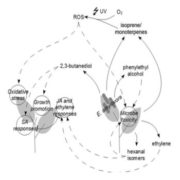
Biological relevance of VOCs emitted during the pathogenic interactions (Mol. Plant Pathol.)
Plant Science Research WeeklyIt is well known that upon pathogenic infections, plants defend themselves by emission of volatile organic compounds (VOCs) as one of the defence strategies. This work by Cellini et al. aims to understand the biological relevance of these organic volatiles in the fire blight disease of apple caused by…
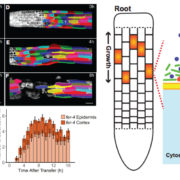
FERONIA rmaintains cell-wall integrity during salt stress through Ca2+ signaling (Curr. Biol.)
Plant Science Research WeeklyGrowing plant cells need to loosen up their cell walls while maintaining their integrity. This process gets trickier when plants are exposed to salt stress. Feng et al. describe the important role of the plasma membrane-localized receptor-like kinase FERONIA in restoring growth and cell wall integrity…
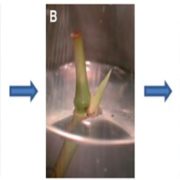
REVIEW In vitro propagation of bamboo species (Plant Cell Tissu Organ Cult) ($)
Plant Science Research WeeklyBamboos are economically important plants, with versatile applications including use in construction, paper, textiles and food production and bioenergy uses among others. Traditional methods of plant propagation are revealed to be challenging in this plant. First, bamboo propagation through seeds could…
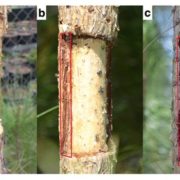
Transcriptomic analysis of wound xylem formation in Pinus canariensis (BMC Plant Biol.)
Plant Science Research WeeklyWoody plants, given their usually long life span, typically must face during their life several injuries that could take as long as several years to heal. In their work, Chano et al. use microarray analysis and RT-PCR to analyze the transcriptome changes that occurs during wood formation after a…
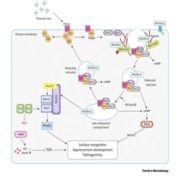
Review. Rise of a cereal killer: The biology of Magnaporthe oryzae biotrophic growth
Plant Science Research WeeklyThe fungal pathogen Magnaporthe oryzae causes one of the most destructive diseases of rice, destroying around 10-30% of rice production world-wide. The pathogen undergoes different developmental changes and produce specialized infectious structures in order to rapidly proliferate within the host cells.…

